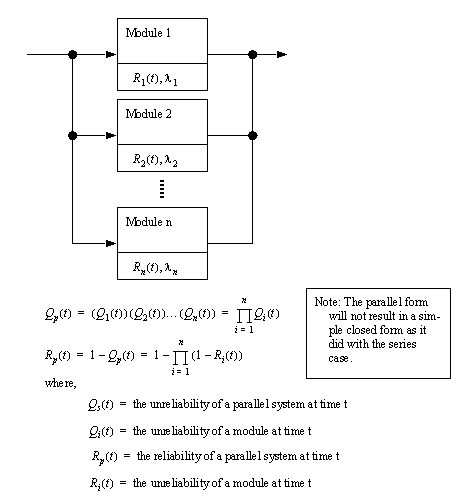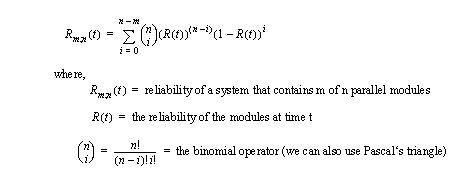
• When a ’parallel’ component fails the reliability of the overall system is reduced, but the system remains completely or partially functional.
• This type of reliability adds cost, so it is normally only used in critical systems where failure is not acceptable.
• Examples of systems using parallel reliability include,
- electronic brakes, also have mechanical backups
- lights - in dark places multiple bulbs are used so a failed bulb does not leave it dark.
• If any of the units fails the system will continue to operate. Failure will only come when all of the modules fail. Here we are concerned with complements of the chained unreliabilities.

• also consider the case of a parallel system that requires ‘m’ of ‘n’ identical modules to be functional, such as a hybrid system, or a voting system that needs two out of three functional units. The student will consider the binomial form of the probabilities.

• keep in mind that many systems are a combination of series and parallel units, to find the total reliability, calculate the reliability of the parallel units first, and then calculate the series reliability, replacing the parallel units with their grouped reliability.
[an error occurred while processing this directive]